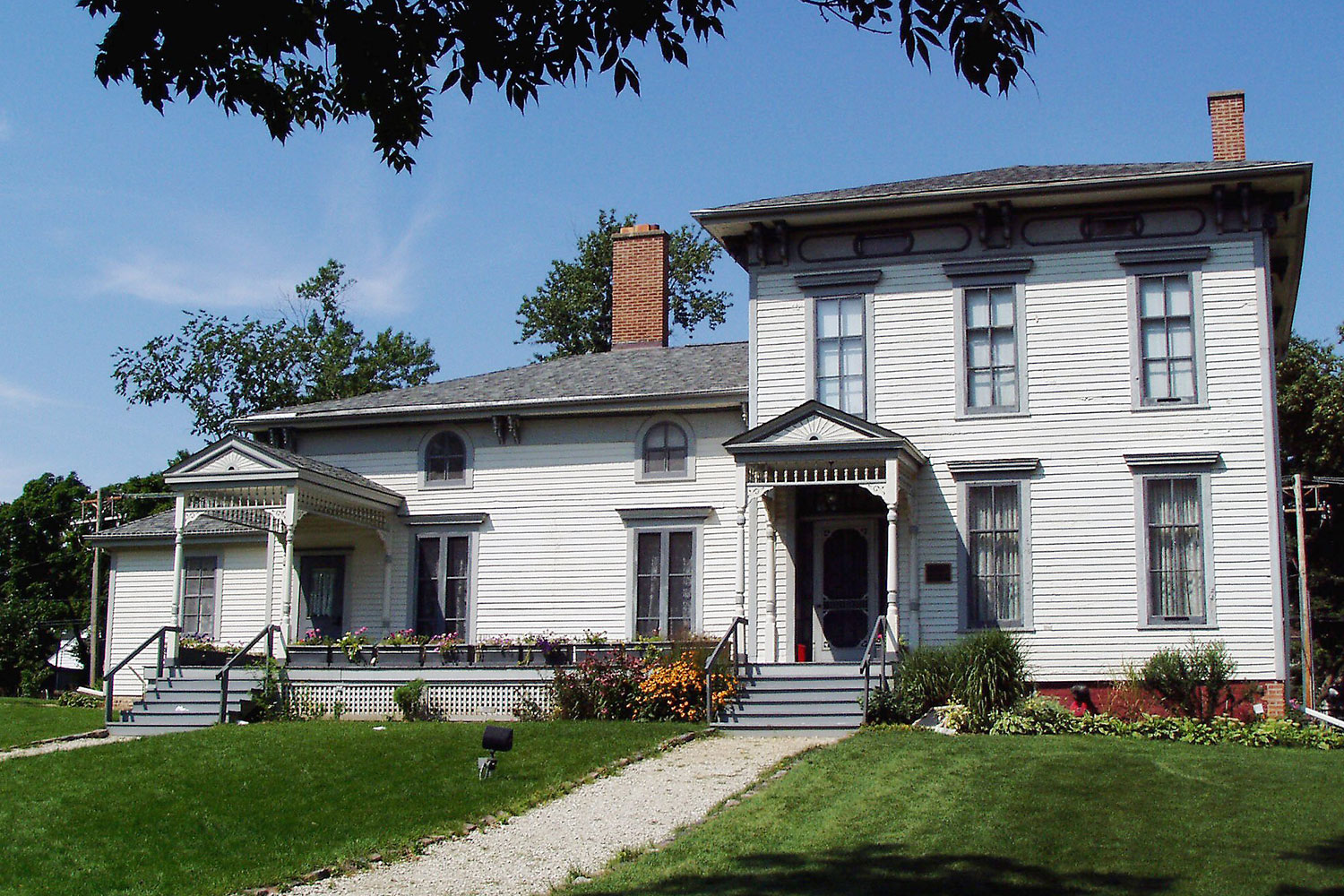If you want to see something old, go to Norwood Park, the suburb-in-the-city neighborhood on the Far Northwest Side. The houses are old, the cars are old, and even most of the people I met there were old.
I started my visit by hopping off the train at the Norwood Park Metra station, a long, low-slung, pitched roof building which was constructed all the way back in 1907, and is on the National Register of Historic Places. Then I hurried across Northwest Highway to the Norwood Family Restaurant. There’s no historic plaque on the restaurant, but it does have a place in presidential history: George W. Bush ate lunch here with Mayor Richard M. Daley in 2001, after flying to O’Hare to show Americans it was safe to get on a plane again after 9/11. The restaurant advertises “great food at yesterday’s prices,” but I paid $13 for a veggie skillet. Inflation is more powerful than history, even in a neighborhood as historic as Norwood Park.
Norwood Park’s No. 1 claim to oldness is the Noble-Seymour-Crippen House, which originated as a farmhouse in 1833, making it, according to the Norwood Park Historical Society, the oldest house in the city of Chicago. Most of its competitors burned down during the Great Chicago Fire of 1871. The fire never reached Norwood Park, which was, at the time, far outside the city limits. It’s a museum now, of course, and as soon as I stepped inside, I was surrounded by docents in their 70s, eager to tell me the house’s story. The house, which is open from noon to 4 p.m. on Saturdays, receives about 15 to 20 visitors a week. This week, I was the first.
“When the house was built, Norwood Park was not annexed into the city of Chicago,” said Anna Durkin. (Norwood Park didn’t join Chicago until 1893, when the city was building itself up to prepare for the Columbian Exposition.)
“Mark Noble was a farmer,” said Stan “Tex” Banash, a lean man wearing a black cowboy hat. “His son had a sawmill on the Des Plaines River. He built this house on a ridge overlooking the swamp. There was nothing out here. This house was the first thing out here.”
“Thomas Seymour built the Italianate addition to the house,” Art Krumrey told me. “He was a member of the Board of Trade. Then the Crippen family owned it. They lived in Evanston and used this as a summer retreat. The Crippen family sold it to the Norwood Park Historical Society in 1987. They were very good in selling this to us, because it would have been torn down by subdividers. In 2000, we got a couple hundred thousand dollars from the state to renovate it.”
The first floor of the house is an upper-middle class parlor from the 1920s, when the Crippens lived there. The second floor is a museum dedicated to the history of Norwood Park, which started as an independent village modeled on Norwood, Massachusetts. That’s why there’s a mile-in-circumference Circle Drive interrupting the city’s grid. The neighborhood grew up around the train station, Krumrey said. Despite its remoteness from the rest of Chicago, it’s only a 20-minute train ride to the Ogilvie Transportation Center.
“That’s what brought people here,” he said. “You wanted to get away from the city for a day, and then they moved here.”
From the Noble-Seymour-Crippen House, I walked over to Taft High School. The trees were abuzz with cicadas. One hopped onto my cell phone case, and rode there for a block. A sign out front of Taft advertises the school as “Home of the Musical Grease.” Co-author Jim Jacobs attended the school in the 1950s, and based the play on his experiences there. Norwood Park is still nostalgic for the hot-rod era. That Saturday, there was a classic car show on Natoma Avenue, blocks and blocks of Camaros, Corvettes, and Chargers with their hoods popped up, showing off those powerful V-8 engines.
No one was prouder of her car than Gail Wise, owner of a 1965 Mustang which was the first Mustang ever sold to a retail customer. She bought it on April 15, 1965, from Johnson Ford on Cicero Avenue.
“I was teaching at Sunnyside School in Berkeley, Illinois, and I needed a car to get to class,” Wise explained. “I wanted a convertible. They said, ‘We’ve got something in the back.’ It wasn’t supposed to be released to the public for another two days. It was $3,447, and I made $5,000 a year, but I had my parents.”
A few years later, Wise married her husband, Tom, who, incidentally, went to Taft High School with Jim Jacobs. (“You were either a greaser or a ballplayer. I was a ballplayer. Jim Jacobs was a year behind me. He wasn’t a ballplayer.” So presumably, that made him a greaser.) Tom insisted on keeping the car. It sat in their garage in Park Ridge for 27 years, immobile due to carburetor problems, but finally the couple restored it, and now display it as a historic artifact. They brought it to the right place. No neighborhood appreciates history more than Norwood Park, where everything old is old again, and getting older all the time.



